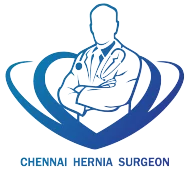Hernias, particularly around the umbilical area, can be a discomforting reality for many. However, advancements in medical procedures offer a beacon of hope.
One way to address umbilical hernias is through a minimally invasive procedure called laparoscopic repair. Let’s delve into the details to understand what sets this method apart and how it’s shaping the landscape of hernia surgeries.
Table of Contents
ToggleWhat is Lap Umbilical Hernia Repair?
Laparoscopic umbilical hernia repair is a minimally invasive surgical technique designed to address hernias near the belly button. Unlike traditional open surgeries.
laparoscopic procedures involve smaller incisions through which a tiny camera and specialized instruments are inserted. This allows surgeons to visualize and repair the hernia with precision.
Lap Umbilical Hernia Repair: How It Differs from Others?
The key differentiator lies in the approach. Laparoscopic repair uses tiny cuts, unlike traditional surgery with big incisions, so it’s less harmful to your belly.
This minimally invasive approach not only provides a clearer view of the hernia but also contributes to quicker recovery times and potentially less postoperative discomfort.
The Procedure of Lap Umbilical Hernia Repair:
The surgical journey begins with the patient under general anesthesia. Small incisions, typically less than an inch, are made around the umbilicus. The laparoscope, a thin tube with a camera, and specialized instruments are then introduced.
The surgeon works through these small incisions to access and repair the hernia using mesh or sutures. The laparoscope’s real-time video feed guides the surgeon throughout the procedure, ensuring precision and accuracy.
Advantages of Lap Umbilical Hernia Repair:
The benefits of laparoscopic repair extend beyond the cosmetic appeal of smaller incisions. The reduced trauma to the abdominal muscles often translates to less postoperative pain and a quicker return to regular activities.
Additionally, the smaller incisions typically result in less scarring, contributing to a more aesthetically pleasing outcome. As with any surgery, the benefits should be discussed with the healthcare provider, taking into account individual health factors.
Recovery Time:
One of the standout features of laparoscopic umbilical hernia repair is the relatively shorter recovery time compared to open surgeries. Patients often experience less pain, reduced reliance on pain medications, and a quicker return to daily activities.
However, it is crucial to have an Umbilical Hernia Care Plan during this phase. Additionally, being aware of Navel Displacement Symptoms can help in managing and monitoring any related conditions during recovery. It is also advised to track some important things That Include your Diet after your Hernia surgery, Travel after your Hernia Surgery, and what to wear after the surgery.
While individual recovery times may vary, the minimally invasive nature of this procedure is a notable factor in expediting the healing process.
Other Umbilical Hernia Surgeries
Open Surgery:
In the traditional hernia repair, the surgeon makes a cut near your belly button. They push the bulging part back into your abdomen and then strengthen the weak spot with a special material (mesh) or stitches. This method is reliable and works well for large or complicated hernias.
Pros: A proven approach, this procedure is effective for larger or more complex hernias.
Cons: Longer recovery time, visible scar.
Robotic Hernia Surgery:
Robotic Hernia Surgery is a type of laparoscopic surgery with enhanced precision: The surgeon controls instruments through a robotic interface, offering greater dexterity and flexibility.
Pros: Potentially shorter surgery time, faster recovery, improved visibility for complex repairs.
Cons: One drawback of this method is the need for specialized equipment, which can increase costs compared to traditional laparoscopy.
Conclusion:
In the evolving landscape of hernia surgeries, laparoscopic umbilical hernia repair stands out as a patient-friendly alternative. Its minimally invasive nature not only contributes to a quicker recovery but also offers cosmetic benefits and requires less surgery time compared to other methods.
As with any medical procedure, consultation with the best Hernia surgeon is crucial to determine the most suitable approach based on individual health factors. Laparoscopic umbilical hernia repair represents a significant stride towards more patient-centric and effective hernia treatments, marking a positive shift in the paradigm of surgical interventions.
In conclusion, the future of hernia repair is taking shape with laparoscopic techniques, offering a blend of precision, reduced invasiveness, and a faster road to recovery.
As medical science continues to progress, laparoscopic umbilical hernia repair stands as a testament to the commitment to improving patient outcomes and experiences in the realm of surgical interventions.
Dr. K. Amilthan MBBS., MS., FMAS., FALS.
Heal Your Hernia Now:
- 20+ Years of Experience
- 1,000+ Surgeries
Your Journey to Wellness Begins with us.

Dr. Amilthan
Dr. Amilthan is a renowned laparoscopic hernia surgeon based in Chennai, with over 20 years of experience in general surgery. He completed his MBBS and MS in General Surgery at Kilpauk Medical College and Government Royapettah Hospital in Chennai.
- All Posts
- Hernia Blog

Which Doctor should you consult for Hernia? You can Consult a general surgeon or a hernia specialist for evaluation and...

A hernia occurs when an organ or any other part of your body pushes through the muscle and surrounding tissue...

An inguinal hernia occurs when the organs push through and bulge against the weak muscles of the abdomen. An effective...

